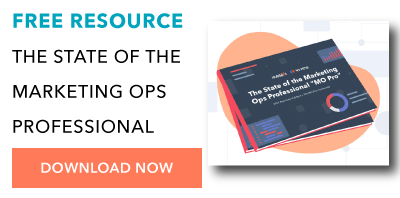1) Not Agreeing on Exactly What Brand Awareness Means to Your Company
Brand awareness means something different to everyone. Your boss might think it's literally just getting your brand in front of as many people as possible. Your content strategist might want to target a specific subset of people, the ones most likely to turn into leads. Your PR team might want journalists and consumers to remember your brand name.
Not agreeing with your team members on exactly how you'll define brand awareness can misalign expectations and start your campaign off on the wrong foot. So before diving into campaign brainstorm mode, sit down with all the stakeholders and agree on one specific brand awareness goal.
Here are some ideas of goals specifically defining brand awareness to get you started:
- Increase our brand's external media coverage by X% by Y DATE
- Increase brand recall and/or brand recognition by X% by Y DATE
- Lift brand conversation by X% by Y DATE (e.g. media mentions, social mentions, review mentions, etc.)
- Increase referral traffic by X% by Y DATE
- Increase direct traffic by X% by Y DATE
2) Trying to Make Your Content Achieve Too Much
Working at an agency, I typically get client requests that look like this:
We want to earn coverage on top-tier media sites and get a lot of social buzz about our new [INSERT PRODUCT, PROGRAM, AWARD, ETC. HERE], but we don't want to do any newsjacking. This piece should be evergreen, and ideally it should bring in a steady stream of organic traffic over time versus just a ton of referring traffic on launch. And [laughs] you know this is all in hopes of increasing conversions. Can you get us some of those, too?
Oh, and can you keep it under $[INSERT GROTESQUELY LOW NUMBER HERE]?
Name three examples of content out there about a relatively unknown brand's new product that gets a ton of social and media attention, earns a respectable amount of organic traffic over time, and brings in sales or leads … all while being affordable.
Yeah. Me neither.
There are three facts about achieving brand awareness:
1) Your content needs to appeal to a large number of people.
This is what ensures you get a lot of media and social coverage (if that's how you're measuring brand awareness). Most journalists and consumers will not write about your new product, service, program, award, etc. unless it's applicable to them.
At the end of the day, earning a lot of media and social coverage is part strategy, part a numbers game. You need to make content that is relevant to as many people as possible, while still being consistent with your brand.
2) You can only choose a few key metrics, not all of them.
Trying to achieve every metric possible makes it likely that your campaign will do a lot of different things only okay. It will appeal to some people, but not enough. It'll be a great setup to rank for long-tail keywords, but its newsworthiness will be stifled because of this. Or it'll be really useful, but no one will care about it because it's too promotional or niche. These are all very likely outcomes if you try to attach too many metrics to a brand awareness campaign.
What's more, it puts a lot of unnecessary creative parameters on your brainstorm. While it is possible that you will develop a campaign that hits multiple metrics, it's more likely you won't. Approaching a brainstorm with a long checklist that each idea has to follow only makes it harder to ideate.
3) Direct conversions usually aren't a good metric for measuring brand awareness.
Sure, your content may encourage visitors to purchase your product or sign up for your newsletter immediately. But it's likely they found your content after seeing it on Facebook or their favorite blog. When they stumbled across it, they were in browse mode. Not research or buy mode.
The chance that they are going to hear about your brand for the first time and decide to convert right there is very unlikely, so you shouldn’t measure the success of your brand awareness campaigns on this metric alone. You should definitely monitor your brand awareness campaigns to see if they're contributing to conversions -- direct or indirect -- but using direct conversions as the sole short-term success metric can set you up for failure.
3) Not Ensuring Your Brand Awareness Campaigns Are Influencing the Bottom Line
You might be thinking, "But Adria. You just told us not to measure conversions with our brand awareness campaigns."
This is still correct. I was advising against using direct conversions as the sole metric for each brand awareness campaign. You need to be able to attribute your brand awareness efforts to real business value at some point, just not right then for that one campaign.
Rather, you should be measuring the direct and indirect conversions earned from all your brand awareness campaigns over time. This will paint a much more accurate picture of whether or not your efforts are contributing to the bottom line.
When I say "bottom line," ideally this would be sales or leads. You measure that "bottom line" with the help of attribution modeling, an analytics report that allows you to assign credit to different touch points along the conversion paths your consumers may take. (HubSpot Pro and Enterprise customers, you can use Attribution Reports to do this.)
There are a lot of really sophisticated attribution models you can set up to help you measure how many people visited your brand awareness content and then came back to convert later on. Here are some resources to learn more:
- What Is an Attribution Report?
- How to Create an Attribution Report in HubSpot
- How to Setup Meaningful Custom Attributions in GA
- GA Attribution Modeling: Beginner's Guide
- Multi-Channel Attribution Modeling: The Good, Bad and Ugly Models
You should be setting up attribution models to get a clear picture of how your brand awareness campaigns contribute to revenue. This is what will justify your work and earn your boss' buy in.
However, if your brand awareness content isn't contributing to revenue or new leads, it doesn't mean all hope is lost. Brand awareness campaigns can only do so much -- they only get your foot in a potential customer's front door. To keep moving potential customers down the funnel, it takes a lot of sophisticated message mapping and testing.
It's very likely there are kinks in your conversion process, so at the very least you should be able to demonstrate that your brand awareness campaigns are earning meaningful traffic. This can be invaluable to discovering those kinks, and can help you prioritize future projects.
Let me give you a real-life example. I worked with my creative team and one of our higher education clients to create an interactive career aptitude test. It ended up getting a ton of media and social coverage upon launch, and later became the landing page earning the most organic traffic to their site behind their home page.
However, visitors to this test -- despite staying on the page and engaging with the piece for quite a long time -- weren't clicking through to other areas of their site or converting. Does this mean our brand awareness campaign wasn't successful? Does it mean it's not contributing real business value?
Absolutely not. This campaign was extremely valuable. It is still to this day regularly bringing new potential, qualified customers to the client's site. There was just one fundamental issue: We weren't making it easy for users to click around or convert. This traffic revealed a kink in our conversion process, which made it an even more valuable campaign.
So, at the very least, regularly monitor your brand awareness campaigns for qualified traffic, both per campaign and aggregated. I personally prefer navigating my clients' attention toward the aggregate lift, as some campaigns will always do better than others and I don't want them to get distracted by minor setbacks that aren't a true indication of overall performance.
And don't forget about influencing-but-not-direct increases in traffic, leads, or revenue. For example, your brand awareness campaigns could have increased your website's authority as a whole, making it more likely to rank for unrelated keywords that bring in more organic traffic. Or, if one of your brand awareness campaigns was a referral program, your current customers might have forwarded the referral onto friends, but maybe those friends didn't click through. Then maybe a few weeks later they remembered your brand and went directly to your site to convert, bypassing the referral campaign altogether.
These examples and others like it should still be attributed to your brand awareness campaigns -- you deserve credit where credit is due.
4) Expecting Quick Results
Rand Fishkin gave a fantastic presentation on why content marketing fails. One of his biggest takeaways is that companies have unrealistic expectations. Most companies get discouraged when they launch their first campaign and it doesn't take off immediately. However, content marketing can be hard. It can take a lot of creativity, testing, and failures to get it right.
Brand awareness campaigns are no exception. This is especially true when you first start out because you don't have a built up community and "social proof" to demonstrate to journalists and consumers that you are legitimate (and thus your content is worthy of covering or tweeting). All of this is built up over time. Achieving big results right off the bat isn't common. So stick it out and continue to track the aggregate results of all your campaigns before you decide to jump ship for another strategy.
So How Do You Effectively Measure Brand Awareness?
The key is to make sure all the stakeholders agree on exactly what brand awareness means to your company and what you're trying to achieve. Then it's a matter of:
- Identifying only a few key reporting metrics;
- Creating, launching, and promoting campaigns that you think will meet those metrics;
- Constantly monitoring your campaigns to see how these affect your company's bottom line (which may require some analytics customization).
Ready to dive into the numbers? I talk about how to specifically measure brand awareness in this short video.
Brand Awareness





![Can You Create a Wikipedia Page for Your Company? [Best Practices & Guidelines to Know]](https://53.fs1.hubspotusercontent-na1.net/hubfs/53/how%20to%20create%20a%20wikipedia%20page.png)


![5 Ways to Build a Positive Brand Association [+ Examples]](https://53.fs1.hubspotusercontent-na1.net/hubfs/53/brand-association.jpg)


